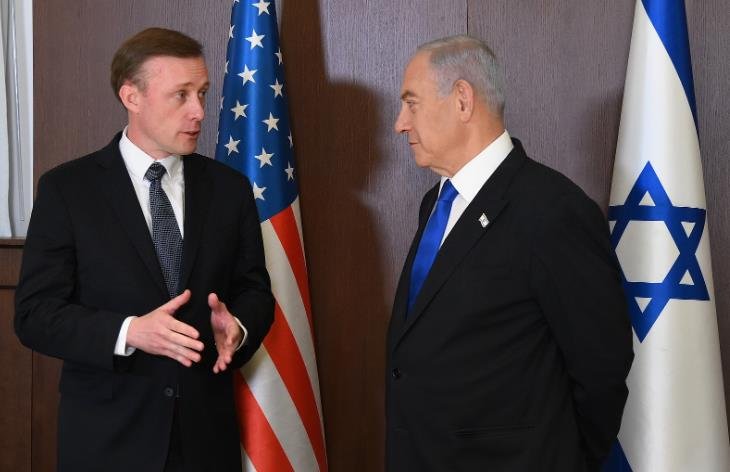Gantz, who is also the leader of the centrist National Unity party and a former rival of Netanyahu, decided to accept the invitation from the White House to meet with Vice President Kamala Harris and National Security Adviser Jake Sullivan, despite the objections of the prime minister. Gantz’s motives and goals for the visit are manifold:
- To strengthen the ties and coordination with the Biden administration, which has been strained by Netanyahu’s hard-line stance and rejection of US mediation efforts.
- To secure more military and humanitarian aid for Israel, especially the replenishment of the Iron Dome missile defense system, which has intercepted hundreds of rockets fired by Hamas.
- To push for the release of the Israeli hostages held by Hamas in Gaza, as well as the return of the bodies of two soldiers killed in the 2014 war.
- To present a more moderate and pragmatic voice for Israel, in contrast to Netanyahu’s hawkish and confrontational rhetoric, and to appeal to the American public and the international community.

The US Perspective and Strategy
From the US perspective, the invitation extended to Gantz is packaged as a strategically timed move to maintain US backing for Israel in the war against Hamas while trying to advance a diplomatic solution that would end the hostilities and address the humanitarian crisis in Gaza. The US strategy involves several elements:
- To reaffirm the US commitment to Israel’s security and right to self-defense, as well as to express solidarity and sympathy with the Israeli people.
- To urge Israel to de-escalate the situation and avoid further civilian casualties, especially in light of the growing pressure and criticism from the UN, the EU, and some members of the US Congress.
- To explore the possibilities of a cease-fire agreement that would include the release of the Israeli hostages, the lifting of some of the Israeli blockade on Gaza, and the reconstruction of the war-torn enclave with international supervision and assistance.
- To revive the prospects of a broader political dialogue that would address the underlying causes of the conflict, such as the Palestinian division, the Israeli occupation, and the stalled peace process.
The Implications and Challenges
The visit of Gantz to Washington has not only domestic but also regional implications, as it reflects a shift in the dynamics and the balance of power between Israel and the US, as well as between the different actors and factions in the Middle East. The visit also poses several challenges and risks for both sides:
- For Gantz, the visit may boost his political profile and credibility, as well as his chances of becoming the next prime minister, if the current coalition collapses or the war ends in a stalemate. However, the visit may also backfire and damage his relations with Netanyahu and his right-wing allies, who may accuse him of undermining Israel’s national interests and sovereignty.
- For the US, the visit may enhance its leverage and influence over Israel, as well as its reputation and credibility in the region and the world, as a constructive and responsible actor. However, the visit may also fail and disappoint, if Israel does not heed the US calls for restraint and compromise, or if Hamas does not agree to the US terms and conditions for a cease-fire.
The visit of Gantz to Washington shows a change in the Israel-US strategy towards the war with Hamas and the region, as both sides seek to balance their interests and values, as well as to cope with the challenges and opportunities that the conflict presents.
